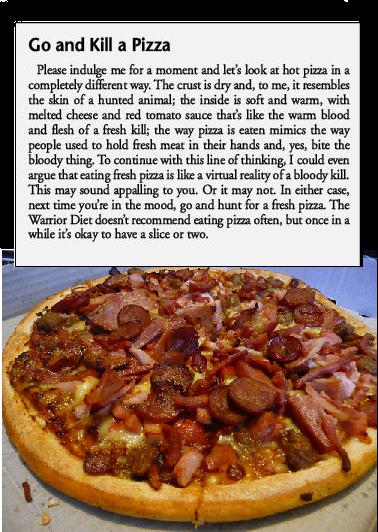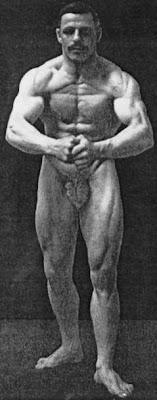Free yourself from the strictures of your diet with a cheat window. It's a metaphor.
In case you missed it, I outlined the necessity of cheat meals/free windows in the first installment of this series. To recap:
- they should be done either once or twice a week at regular intervals for 3-4 hours or once a week for the entire day
- they're essential- at least one study has shown that short breaks from high fat diets will not have an adverse effect on lipolytic activity, and lipolytic activity in people who take high carb breaks from high fat diets are actually higher than those who are on a high carbohydrate diet.
- according to Dave Palumbo. if "you use a keto-diet, you'll need to have a cheat meal (to spike insulin) at least once per week to keep the thyroid functioning normally." Also, as I stated in my previous blog on bulking, cheat windows speed the metabolism, (Matsumoto) replenish your glycogen stores, (Bowden) and increase your thyroid, adrenal, and sex hormones, (Poehlman) in addition to providing an awesome forced break from clean eating.(Westrate) [See the 1st part of this series for full cites]
This picture needs no caption.
The overall structure of your diet can play an integral part in the efficacy of your cheat meals. That's not to state that the general structure of your diet, unless it's an unabashed shit-show, is the end-all be all of the utility of cheat windows, but the manner in which your cheat meal will ultimately effect you changes with your overall diet.
Any dieter who's gotten into the game in the last ten years likely follows a low carb diet of one sort or another. For the purposes of simplicity, I'll separate them into the keto diet (low/no carb, high fat, high protein) and the paleo diet (low carb, low/low-moderate carbs, high protein, low/moderate fats). Though both of these diets can be altered further by modulating the number of calories eaten, I'll generalize and state that, by and large, people on a keto diet eat more calories than people on the paleo diet. It's here that the primary difference lies, and the root of what I consider to be the key difference in the manner in which the cheat meal will effect you. In paleo dieters, due to the lower calories, they'll see a much greater overall effect on thermogenesis and the endocrine system. For keto dieters, however, the effect will lie in the other positive responses paleo dieters also will enjoy- greater thyroid response, insulin spikes, and replenishment of glycogen stores. Because they're far more likely to be in a caloric surplus than the paleo dieters, keto dieters' thermogenic response won't be as great. For this reason, it's also far more advisable and necessary for paleo dieters to utilize two cheat windows a week than it is for keto dieters.
Weirdest physique ever, but he knows his keto dieting.
"When that cup is half full, your body will utilize the energy from the carbohydrates and the energy from fat. As the cup approaches fullness, however, the body is more inclined to use the energy from the carbohydrates, and leave the fat alone (survivalist response). When you eat too many active carbohydrates, or you eat too many at the wrong time of the day, "your cup runneth over" and that excess is stored as fat! At the opposite extreme, when that cup is empty, your body has little energy to perform activities of daily living and exercise."Thus, Willey recommends periods of low or no free carbs prior to a scheduled cheat window in order to empty one's proverbial carbohydrate cup for a refill.(Z Diet)
A survivalist. Obviously, you'd like to avoid the survivalist response.
Ori Hofmekler's Warrior Diet
"WE NEED NOTHING TO DO with anything close to perfectness! I've asked all the skeletons that have already made the sacrifice! To FOLLOW ME! Whether to walk further than all the rest or to stay behind and make the sacrifice... It makes no difference. FOR AS THE ULTIMATE WARRIOR, I SURROUND US IN THIS FORCE FIELD!... There is no poison, no creation, and no medicine to cure what we have!"
That effect is, in Ori's words, that "nutrients are assimilated at a greater rate, there is an acceleration of the anabolic process of repairing tissues and building muscles" and all of the other shit I mentioned above. (WDmore necessary and effective to use cheat windows in concert with paleo dieting than keto dieting (where a carb refeed could suffice as you're likely not in a caloric deficit), cheat windows are useful no matter which of the two you choose. Frankly, I've got doubts if a cheat does any fucking thing at all when utilizing an isocaloric diet, it might give you a slight metabolic boost if your calories are on the low side. I'll leave that to the more adventurous/dietarily lazy among you to decide, however.
"Necessary? Is it necessary for me to drink my own urine? No, but I do it anyway because it's sterile and I like the taste."
Interestingly, Hofmekler and Willey agree in many regards in their suggestions for the structure of cheat meals, in spite of the fact that their overall recommendations for dieting differ wildly. The cheat meal,according to both authors, should have its foods ordered so that you eat your bland foods first, followed by more flavorful foods, and should be veggies first, followed by proteins, and ended with carbohydrates. Willey doesn't actually give any reasoning in the works I've read, but Hofmekler's will serve- he thinks that the human body doesn't tolerate eating foods that are "aggressive" in taste before bland foods, and that conditioning yourself to eat blander foods will reduce your cravings for fast food. Beginning, then, with veggies will prep your stomach to accept more nutrients, fight inflammation, and provide vital enzymes to aid in digestion and elimination. Thereafter, you should eat your proteins and carbs, and both authors recommend that you include as many flavors, colors, and textures as you possibly can, as "the more variety you introduce in your diet the better off you'll be." (WD 57 and BTS 61) Finally, both authors recommend that you stop eating when you're more thirsty than hungry, as this is a good indicator that you've eaten enough.
Time to commence the drinking.
I guarantee this bitch is not settling for a small popcorn... or a medium.
You'll notice that I eat my carbs last, which I do religiously. For me, it serves a valuable purpose outside of the nutritive quality- I make sure I eat my protein while I still have room to do so. If you wait until the end, you might find you've got no room left into which to stuff some protein, and then you'll be that jackass whose protein is low for no reason. When you eat the protein first, it also serve to lower the glycemic load on your system, which is especially valuable if you're eating something sweet. Finally, this will help keep your carbs to a manageable level, so that your proverbial cup won't "runneth over" as the result of a single cheat.
If I have a second cheat during the week, it's usually something far more tame, like having high protein pasta with extra-lean ground beef in marinara, and maybe some low-fat cinnamon buns for dessert. The second cheat meal occurs generally only if I'm doing a paleo or lower calorie keto diet, or if I simply happen to be starving no matter what I eat during the day on Tuesday or Wednesday. Remember, a cardinal rule of cheat windows is to have them on non-consecutive days.
Bear Grylls eating a reindeer's heart- he's the ultimate fucking Predator.
"I strongly believe that eating warm food mimics the effect of a fresh kill. A predator's first bite of its prey always tastes warm (since this is a fresh kill). Scavengers, on the other hand, who eat leftover corpses, enjoy the cold taste of the animal that was killed by a predator beforehand. It's my belief that when you eat and enjoy warm food, it triggers the Predator Instinct, and those people who settle with cold leftovers may trigger the Scavenger Instinct."(WD 65)
Finishing Out The Day
Ori recommends drinking water and "any tea that stimulates digestion" like "peppermint, ginger, green and chamomile", which is great advice, I suppose, but it's not really my primary concern. If you follow my advice, you shouldn't have any problem with digestion. If you're a Brit, or a member of some other wacky tea-drinking culture, by all means have at it. Otherwise, just make sure you drink enough fluids to slake your thirst but not leave you overly full- you're still having protein every three hours. This means you're likely having a shake three hours after the conclusion of your cheat meal. That'll keep your metabolism rolling and prevent you from consuming a second massive meal later on. You'll find yourself tremendously fucking hungry the morning after a cheat meal, and a middle of the night protein shake will serve you well in preventing your cheat from becoming a 24 hour affair.
Ridiculously hot champion armwrestler Sarah Baeckman prefers ribs, fries, and chocolate for her cheat. Shit's obviously working.
Sources:
Hofmekler, Ori.
Willey, Warren. Better Than Steroids
Willey, Warren. The Z Diet




















